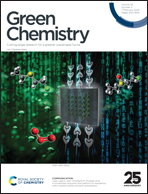A systematic review of efficient recycling for the cathode materials of spent lithium-ion batteries: process intensification technologies beyond traditional methods
Abstract
With the increasing use and the consequent retirement of lithium-ion batteries (LIBs), there has been an upsurge in spent LIBs, posing significant challenges to energy, resources, and the environment, which has led to the necessity to recycle spent LIBs. For the recovery of valuable components in cathode materials, traditional hydrometallurgical and pyrometallurgical methods are not conducive to the sustainable development of the environment, making it crucial to explore lithium-ion battery (LIB) recovery technologies beyond traditional methods. This paper focuses on introducing intensification technologies that are beyond the traditional methods, including external field intensification technologies (in the fields of acoustics, optics, electricity, and magnetism), novel solvent-based intensification technologies, direct recovery technologies, and potential development technologies. From the perspective of process intensification, the process flow, principle, effect, and scope of application of various recovery technologies are systematically summarized. Furthermore, the advantages of these advanced recovery methods and the current challenges faced by them are discussed to propose the potential research direction of the recovery technology of lithium-ion battery cathode materials, which is of significant importance for the sustainable development of the global new energy industry, the maintenance of ecological balance, and the circular utilization of mineral resources, such as lithium, nickel, and cobalt.

- This article is part of the themed collection: 2024 Green Chemistry Reviews


 Please wait while we load your content...
Please wait while we load your content...